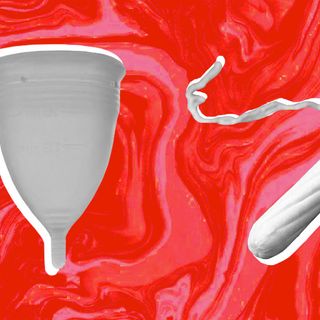
How to Keep Breastfeeding After Going Back to Work (Without Losing Your Mind)
It takes a little planning and a lot of pumping.

As more organizations offer creches, nursing time, and flexible working hours for new moms, it’s getting easier to continue exclusive breastfeeding after going back to work. However, despite these facilities and policies, juggling the demands of breastfeeding and the demands of work is often still a challenge, especially for mothers who have to return to work before a full six months of maternity leave.
Breastfeeding and returning to work can peacefully co-exist, but it requires planning, starting several weeks prior to your first day back in the office. Here’s what you need to know.
Setting the bottle-feeding habit
Two to three weeks before you return to work, start getting your baby used to feeding from a bottle daily. The transition from breast to bottle can take a while for babies to adapt to, and this way you won’t have to worry about jumping back into the swing of things while also worrying about whether your baby is getting enough to eat. Don’t use a bottle for all feeds in a day, though; establishing a mix of both bottle-feeding and breastfeeding will prevent babies developing a latching problem.
(A tip for working moms who are also breastfeeding: Stock up on at least double the number of bottles your baby actually requires. That way, you’ll have one set to feed with and the other set to store in.)
Maintaining breast milk supply
Ideally, you’ll have established a regular breastfeeding schedule in the first month after birth, which ensures a good milk supply over the longer term. This makes it easier to express milk even as your baby latches less frequently. Maintaining a breast milk supply after you’ve returned to work is easier, too, if you maximize bonding time when you are home. Keeping your baby nearby at night and breastfeeding directly when you’re at home will help maintain your breast milk supply.
If flexi-time and nursing hours are on offer from your employer, working out a breastfeeding schedule to suit the needs of your baby should be possible; in this case, pumping may not even be necessary.
Pumping breast milk at work
If pumping breast milk at work is necessary, invest in a good quality, electrical breast pump. A double breast pump may not be a bad idea; they save a lot of energy and time. They are also expensive, though, so you may want to look into breast pump borrowing, or buying a breast pump second-hand. Many mother-to-mother networks on WhatsApp, Facebook and other social media platforms are good resources for working moms in need of a breast pump.
If you’re going to be working eight hours, you’ll need to pump roughly three to four times. This might vary based on your baby’s age, but it’s always better to pump at least 30% more than required, to have on hand in emergencies (for instance, if you’re delayed returning home from work). Don’t hesitate to be honest and open with your employer about your need for a private, clean space to express breast milk. (Bathrooms shouldn’t have to count as pumping rooms.)
If you’re having trouble with breast milk expression, carry a picture of your baby or a recording of their voice – these cues can actually stimulate ‘let down,’ that is, the release of milk from the breast. Most breast pumps now have a let-down cycle that, combined with these external cues, can help ease out your milk flow.
Storing expressed breast milk
The rules of storing expressed breast milk are as follows:
- Freshly expressed breast milk can stay at room temperature for about 6-8 hours.
- Breast milk can be stored in insulated cool bags with ice packs for up to 24 hours.
- Breast milk can be refrigerated for 3-5 days.
- Breast milk can be kept in the freezer compartment for 2 weeks.
- Breast milk can be stored in a deep freezer for 6 months to a 1 year.
Whoever is feeding your baby from stored breast milk should know how to warm it properly. Do not directly heat or microwave refrigerated or frozen milk. Instead, put the bottle in a container of warm water until the breast milk becomes room temperature.
Keeping your sanity
Leakage is inevitable in the first few months and varies among women, so if you’re resuming work, breast pads are your friend — just ensure you change them out when they become damp in order to avoid infection. Know that it won’t last forever; as your body adjusts to your changing schedule, your breasts will eventually stop leaking. You might also want to keep an extra blouse or shirt at work should there be a situation where you need to change. And speaking of attire, invest in pumping-friendly clothes; you don’t want to have to take off a whole dress three to four times a day just to pump.
Balancing work and a new baby can be hectic, and it’s easy for working moms who are breastfeeding to get caught up in all they have to juggle. But remember that your nourishment and nutrition is important, too. Don’t forget to feed and care yourself while you’re making sure your baby can feed while you’re away.
Lastly, and most importantly, do not feel guilty about leaving your baby home. Embrace the choice that you’ve made and be proud of having established a breastfeeding routine even when you are away from your baby.
Vanshika Gupta Adukia is a Mumbai-based physiotherapist who specializes in antenatal, postnatal and pelvic floor care, a childbirth educator, and the founder of Therhappy. She holds a Bachelor of Physical Therapy degree from DY Patil University, Mumbai, and is a CAPPA Certified Lactation Educator. An avid reader, she is passionate about women's health, little babies, all things colorful and happiness.
Related


Science Has Identified Four New Personality Types. Which One Are You?
